Politics
In Maps: All That You Need To Know About 'Madhya Pradesh 2023'
Venu Gopal Narayanan
Dec 31, 2023, 06:02 PM | Updated 06:00 PM IST
Save & read from anywhere!
Bookmark stories for easy access on any device or the Swarajya app.
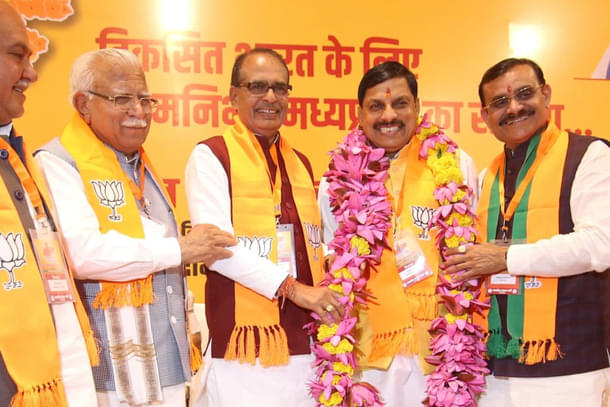
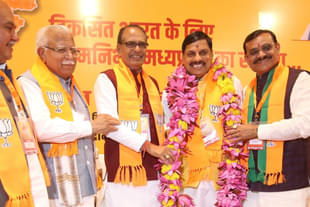
Madhya Pradesh witnessed paradigmatic assembly elections recently, in which, the Bharatiya Janata Party (BJP) swept the state with a record vote share of 49 per cent. The contests became more bipolar, the impact of the Congress party’s identity politics was trumped by a significant supra-caste counter consolidation, and the BJP gained votes in bulk from almost all communities.
To recap, these are the results:
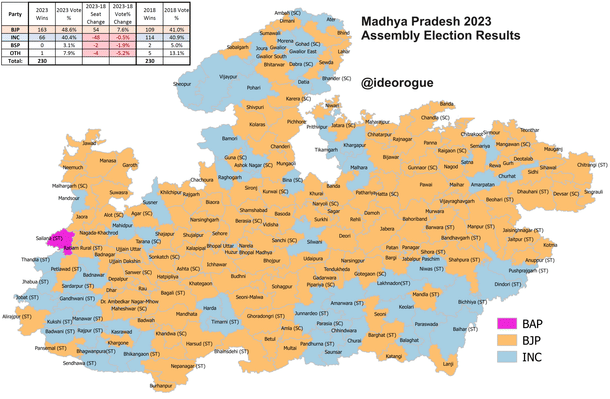
Like all large states, different regions of Madhya Pradesh voted differently, but by and large, the BJP swept the Malwa Plateau, while the Congress held on to pockets in the tribal areas, and the Chambal region in the north.
The scale of the BJP’s victory becomes apparent when we look at its vote share map. It polled over 50 per cent in 99 seats, while the Congress managed only 21 (of which, around a dozen have a larger-than-average Muslim population, three are reserved for Scheduled Tribes, and four for Scheduled Castes).
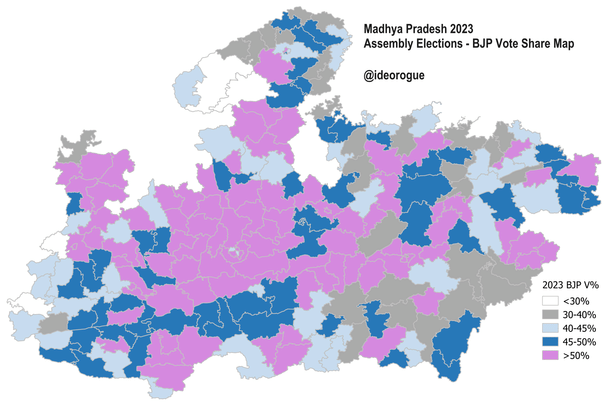
This point is reinforced by a map showing the vote swing towards the BJP from 2018 to 2023. Note the number of dark blues, indicating a sizeable vote swing, across the central plateau region, the tribal belts, and in the north.
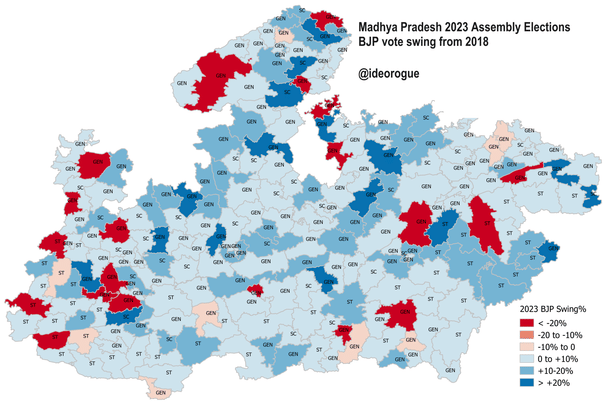
The Congress vote share map, on the other hand, tells its own story. Note the higher concentration of better performances in the tribal belt and in the north.
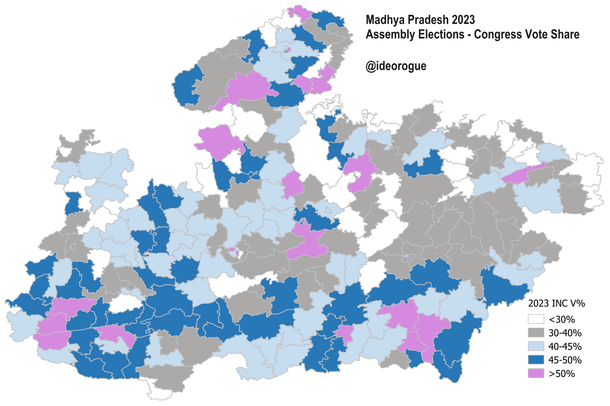
This aspect is offset by a Congress vote swing map, which shows that the party lost significantly to the BJP in the Malwa plateau.
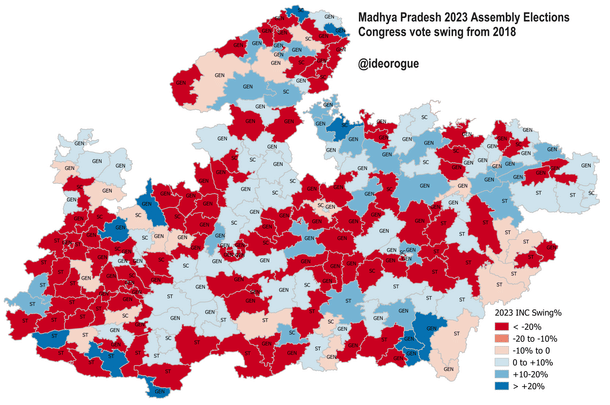
But, as mentioned at the start, there was a third factor at play: increasing bipolarity. This has benefited the BJP. See the ‘Others’ vote share map, and, more pertinently, a vote swing map below that.
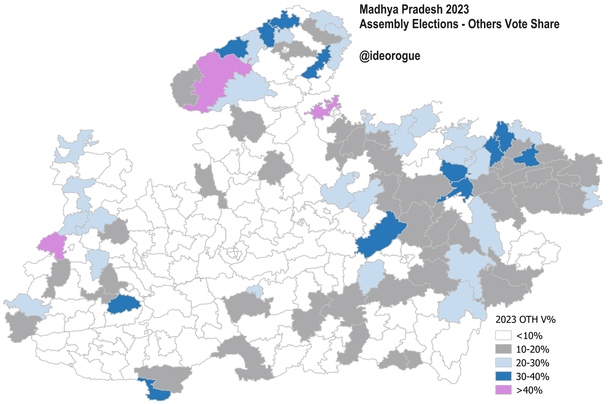
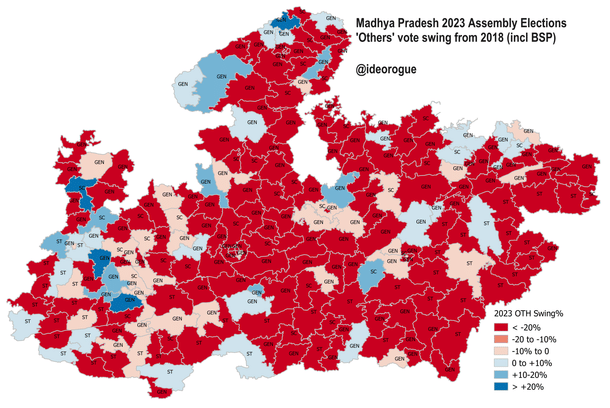
The ‘Others’ have held on to some sizeable vote shares in the north and in the east, which is one reason why the BJP didn’t fare as well in the Chambal region as it did in other parts. Nonetheless, the picture which emerges is that the BJP won by strong margins in 95 seats (over 10 per cent win margins), while 13 of the Congress’ 66 wins were by a margin of less than one per cent. This is the yawning difference.
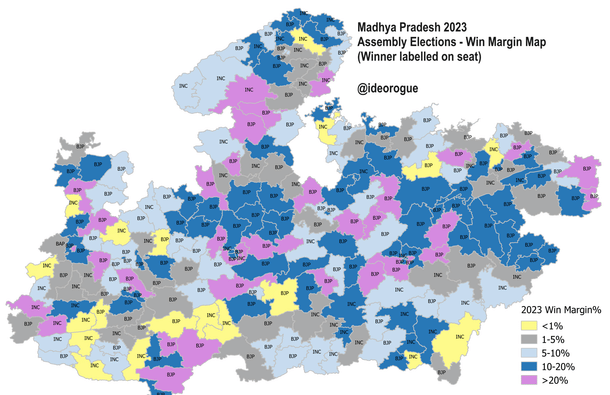
But, perhaps, the most important inference to be drawn from these results is that the BJP appears to have finally broken a Muslim-Dalit axis in the state. One adducible data point is that the Bahujan Samaj Party’s (BSP) vote share declined from 5 per cent to 3 per cent, with most of that moving to the BJP.
Another is the regions where the BJP made more gains, and held on to more seats with an increased vote share. Curiously, these results reveal a corroborative pattern when overlain on a demographic map of Muslims-plus-Dalits.
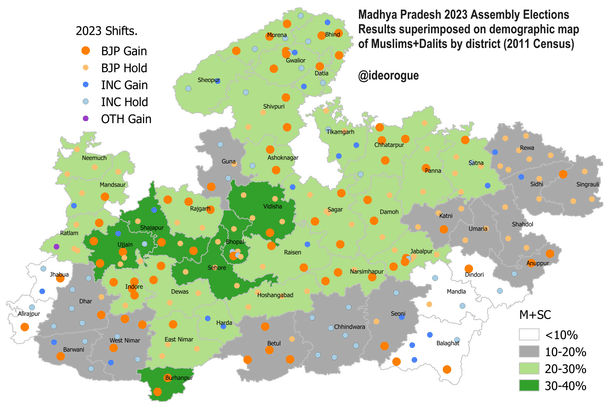
This is what happens when the dharmic vote gets triggered in a state, and it finally has in Madhya Pradesh. Those who refuse to accept this reality will continue to pursue the corrosive path of identity politics, to their electoral detriment, and those who do, will agree that this verdict is another positive step on the path of an ongoing civilizational awakening.
Venu Gopal Narayanan is an independent upstream petroleum consultant who focuses on energy, geopolitics, current affairs and electoral arithmetic. He tweets at @ideorogue.





